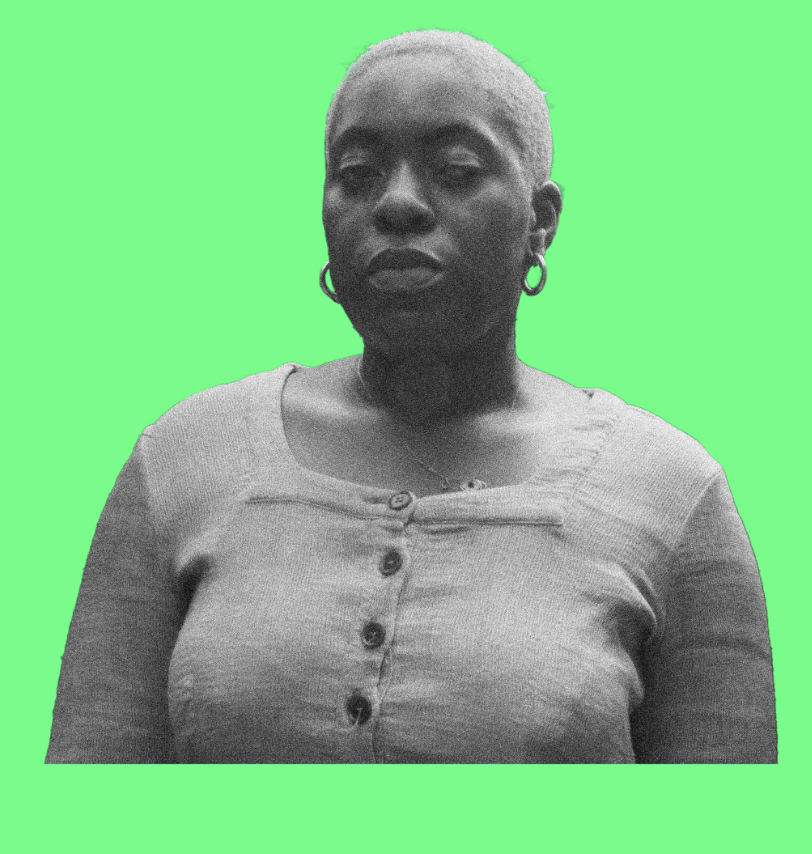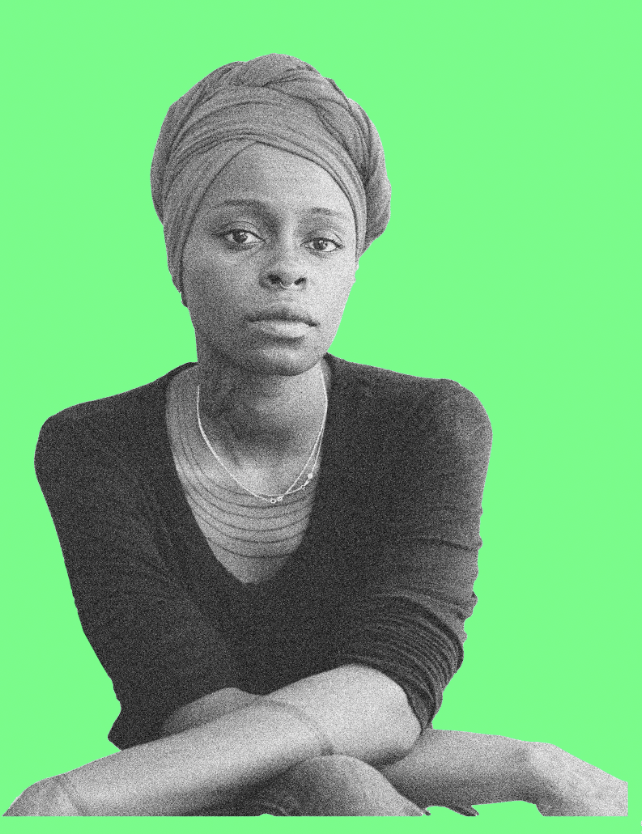
The artists have envisioned their artistic presentations in direct response to the theme of Nigeria Imaginary. Working with the curator, each work takes on a different moment – from the historical past to a more recent present, to present a laboratory of ideas executed through varied mediums. The list of artists was purposefully multi-generational, cross-disciplinary, and involved artists from various parts of Nigeria to ensure the diversity of perspective is shown and to create a multi-layered experience of the Imaginary. Because of this, the works reference various aspects of Nigerian history and life from traditional Yoruba sculpture and Tubali Hausa vernacular architecture, to the paintings of Ben Enwonwu, the architectural spirituality of the Mbari House, a speculative world where the Benin Expedition of 1897 did not occur – an alternative imaginary for Benin Bronzes and the storytelling of the Benin Expedition – to a proposal that encourages us to consider the recent #EndSARS movement through new the eyes of our youth.

Born in 1992, London, United Kingdom Lives and works in Brooklyn, New York
In 2014, Tunji Adeniyi-Jones received his BA from The Ruskin School of Art, Oxford University, UK. In 2017, he also received an MFA in painting and printmaking from the Yale School of Art, New Haven, Connecticut. Adeniyi-Jones will present a site-specific intervention that pays homage to Nigerian and Venetian traditions.
Adeniyi-Jones's site-specific painting responds directly to the building's architecture, drawing inspiration from Venetian ceiling painting tradition and Giovanni Battista Tiepolo. Incorporating Nigerian art historical references, it blends the fluidity of Ben Enwonwu with traditional Yoruba sculpture. The vibrantly colored ceiling painting features almost life-size figures amidst foliage, evoking exploration, transition, and potential—key themes in Nigeria's current context. Adeniyi-Jones deliberately plays with perspective, inviting multiple viewing angles. Celestial beings depicted in strong, fluid forms gather amidst dense foliage, transcending time and space. The work parallels Venice's cultural history with Nigeria's, taking a diasporic and contemporary approach.

Born in London, United Kingdom Lives and works in Lagos, Nigeria
Ndidi Dike is a multidisciplinary artist who spent her early years in London before relocating to Nigeria. She completed her degree in Fine Arts at the University of Nigeria in Nsukka in 1984. Dike will show a two-part artwork reflecting on the local uprising of End SARS and its intersection with global movements against police corruption. Dike's works are intended as both a memorial and a beacon of hope.
Seven hundred and thirty-six black wooden batons, once used in colonial and post-colonial Nigeria, are contained in this monolithic like installation serving as both a monument and a call to action created by Ndidi Dike.
"Blackhood: the Living Archive" confronts viewers with the enduring legacy of policing violence. Dike prompts reflection on the exportation of American policing to Africa and its deadly consequences, urging consideration of escape from this history. The batons also memorialize those lost in the EndSARS movement, highlighting systemic injustices. Exhibited at Art 21 Lagos in 2021 in a different format, the installation demands attention to ongoing struggles against oppression.
Linked conceptually and by a doorway to 'Blackhood: A Living Archive' within the pavilion, "Bearing Witness: Optimism In A Disquiet Present" features a triptych portrait of a teenage boy accompanied by 'totems' displaying photographs from the #EndSARS demonstrations by Ndidi Dike, Kelechi Amadi-Obi, and Nyancho NwaNri. This artwork portrays the nationwide mobilization as a pivotal moment in Nigeria's political, social, cultural, and economic landscape. It emphasizes the intergenerational nature of the movement, with subjects and photographers spanning various ages and representing different generations reflecting the broad impact of the protests.

Born in 1986, London, United Kingdom
Lives and works in London, United Kingdom
Onyeka Igwe is an artist and researcher working between cinema and installation. Her work comprises untying strands and threads, anchored by a rhythmic editing style, as well as close attention to the dissonance, reflection, and amplification that occurs between image and sound. Igwe will present an audiovisual series work that analyses the lingering effects of colonialism and the intricate relationship between Nigeria and Great Britain. Building upon her previous exploration of colonial legacies through the "sonic shadows" of film archives, Igwe extends her inquiry into the entwined histories of these nations.
Onyeka Igwe's installation explores degradation and deterioration through a two-part exploration of archiving and record-keeping. Filming and sonically representing celluloid film cans found in the Colonial Nigerian Film Building, Igwe traces their journey to Jos, housing the Nigerian Film Corporation and National Film Institute. Using the locality as an interpolation point, Igwe immerses the audience in Nigeria's history through collected sounds and film clips. The installation prompts reflection on the role of archives, the selection of histories, and the potential for restoration once lost.

Born in 1985, Ile-Ife, Nigeria
Lives and works in New York, United States
Toyin Ojih Odutola is best known for her multimedia drawings and works on paper, which explore the malleability of identity and the possibilities in visual story-telling. Interested in the topography of skin, Ojih Odutola has a distinctive style of mark-making using only basic drawing materials, such as ballpoint pens, pencils, pastels, and charcoal. Ojih Odutola's works will explore the histories and stories related to the Mbari house, both as a physical site and a powerful metaphor.
Toyin Ojih Odutola presents a series of pastel and charcoal drawings that intricately depict black skin texture and tone. Deliberately placed markings accentuate bone structure and facial features, emblematic of Odutola's style. These drawings delve beyond mere depiction, inviting the viewer into the inner world of the characters. The series, a homage to Ojih Odutola's late grandmother, situates figures within spaces and moments that impacted her grandmother – the Mbari house, Aba Women's Society, and Mbari Club – representing transformation and evolving tradition.

Born in 1979, Lagos, Nigeria
Lives and works in Toronto, Canada
Abraham Onoriode Oghobase is a visual artist living and working in Toronto, Canada. In his photography-based practice, he engages with issues around knowledge production, land, colonial history, and representation. Onoriode Oghobase will present an installation that challenges the narrative of objectivity and authority within the written and photographic records from Nigeria's colonial era.
Abraham Onoriode Oghobase reshapes history through digital manipulation, prompting new perspectives on memory. He highlights resource extraction as a colonial strategy altering relationships with land, labor, and self in Nigeria. His collection features 'still life' photographs of rocks from Jos and reinterpretations of archival images. Oghobase arranges these images like musical staves, forming intricate configurations that challenge traditional narratives.
Through strategic appropriation, Oghobase dislocates found colonial imagery to contest power and reshape historical narratives. Colonial Self-Portrait 05 (2023) references an iconic photograph from Nigeria's independence ceremony in 1960, featuring James Robertson and Abubakar Tafawa Balewa. The obscured figures in stately attire reflect fading colonial power and the uncertain future of newly independent African states.

Born in 1993, London, United Kingdom
Lives and works in New York, United States
Precious Okoyomon is a poet and artist. Their work considers the natural world, histories of migration and racialization, and the pure pleasures of everyday life. For the Nigeria Pavillion, Okoyomon will turn a radio tower into an instrument, designed to capture and transmit atmospheric conditions as sound. This innovative creation also serves as a platform for the confessions of chosen Nigerians, including poets, artists, and writers, adding depth and resonance to the broadcasted messages.
Taken over by fast-growing weeds, this installation serves as both a radio tower and a monument to collective cultural thinking. Precious Okoyomon's work immerses us in a dreamlike state, blending reality with fantasy. The tower functions as a musical instrument, transforming atmospheric changes into sound, and broadcasts the voices of Nigerian poets, artists, and writers interviewed during a research trip to Lagos in January. This infusion of the Nigerian Imaginary into the city becomes diasporic, impacting its surroundings with confidence and yearning. Okoyomon frequently creates large-scale, land-based art installations. At the 2022 Venice Biennale, their work in the Central Pavilion included soil sculptures and free-roaming butterflies, spanning over 50 meters.

Born in Kaduna, Nigeria
Lives and works in Florida, United States
Fatimah Tuggar is an interdisciplinary artist based in the United States. Tuggar uses collage and digital technology to create works that investigate dominant and linear narratives of gender, race, and technology. She is currently an Associate Professor of AI in the Arts: Art & Global Equity at the University of Florida in the United States. Fatimah Tuggar will present an installation that utilizes Augmented Reality (AR), Artificial Intelligence (AI), and Animatronics, integrated into Architectural Façades inspired by Tubali Hausa vernacular architecture.
Light Cream Pods offer simultaneous interactions with calabashes, virtual visuals, and audio experiences through AR, AI, and Animatronic Sculptures, within architectural façades inspired by Tubali Hausa vernacular design. Tuggar's art installation, primarily situated through television screens in shared courtyards' "Doors" and "Windows," signifies the transformative power of entryways as portals to imagination. By melding indigenous technologies with contemporary computing and artistic strategies, Tuggar bridges actual spaces and imaginary places, highlighting the calabash as a symbol of transition and a container for ideas. The versatile 'Pods' work as motorized sculptures and AR anchors, blooming like flowers and regenerating patterns with AI, prompting reflection on cultural heritage's role in addressing ecological crises.

Born in 1986, London, United Kingdom
Lives and works in London, United Kingdom
Yinka Shonibare CBE RA is an interdisciplinary artist born in London and moved to Lagos, Nigeria at the age of three. He lives and works in London. Shonibare's practice explores cultural identity, colonialism, and post-colonialism within the contemporary context of globalisation. Shonibare CBE RA will show a sculptural installation inspired by the grandeur of historic artworks originating from the Kingdom of Benin. This installation serves as a poignant reflection on the cultural heritage looted by British forces during the Benin Expedition of 1897.
Yinka Shonibare's "Monument to the Restitution of the Mind and Soul" reflects on the enduring impact of the British Empire. Crafted from clay, the piece replicates 150 objects looted from Benin City in 1897, including a bust of Sir Harry Rawson, painted in Batik style. Notable items also include the head of an Oba and the brass cockerel (Okukor). Shonibare's work reconnects these artifacts with their cultural roots, using clay reminiscent of native Benin clay. It calls for alternative monuments and the repatriation of looted artifacts, acknowledging their historical, aesthetic, spiritual, and cultural significance.